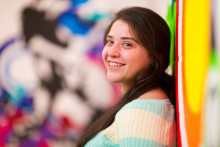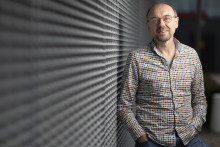Walking into one of the labs used for Biomedical Engineering research is like entering an astounding gallery of sophisticated sensing and measuring technologies. As a philosophy student, the only times I get to roam these spaces is when I volunteer to be an experiment’s subject. It’s an entertaining activity that I keep partaking in, mostly to help fellow Master students in need of humans to run their tests on. I’ve ended up wearing a funny motion tracking suit or playing video games with different types of sensors attached to my body.
But unlike previous projects, where the measurements were taken in a single one-hour session, the newest experiment I’m volunteering for consists of 28 sessions extended across two months. Because of the number of instruments involved, and the continuous tracking of my physiological performance throughout the weeks, this experience initially felt more intrusive. But after some days, you just get used to having specific body reactions closely measured. And once I got comfortable in the lab, things started getting quite insightful.
As I’m walking slowly on the treadmill with all these sensors stuck to my legs, following the experimenter’s instructions, and reacting to different stimuli, I realize I’m just like a guinea pig. Except that, unlike this rodent, I am able to reflect on the fascinating things happening around me.
I get a glimpse of the numerous steps that need to be taken before conclusions are presented in research papers. Such steps are sometimes part of a carefully laid out plan: turn this switch on, adjust this mechanism, run the program. But other times, they’re just responses to unpredictable events. Tools break in the process, troubleshooting and improvisations are required.
Guinea-pigging in the lab amid all these cables, screens, and sketches laying around, I become aware of the messiness of scientific practice. This ‘messiness’ isn’t a bad thing. On the contrary, it highlights the complexity of research and the vast efforts humans put into it. Practicing science is like walking a long dirty road until you reach the polished results you can showcase in conferences.
Aside from all the precision instruments and computers in the lab used to get the most accurate measurements, it is humans who break their heads trying to put all the pieces of the puzzle together. The general public justifiably trusts the researchers’ skills to recognize and reduce the noise in the signals, clean the dust off the instruments, identify incongruities in the data. Within this messy assemblage of machines, my body’s performance, data visualizations, the experimenter’s interpretations, and the computing of dozens of graphs, I can’t shake the feeling that science is still, at its very root, a very human endeavour.







